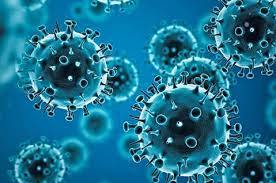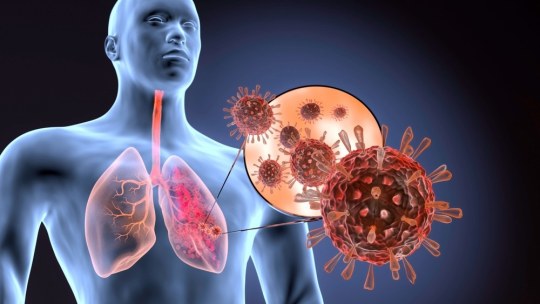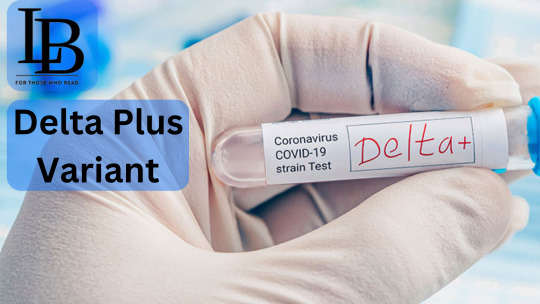#COVID-19 variant: Delta B.1.617.2
Text
ISDH: List of locations for new COVID-19 boosters available
New Post has been published on https://aroundfortwayne.com/news/2022/09/13/isdh-list-of-locations-for-new-covid-19-boosters-available/
ISDH: List of locations for new COVID-19 boosters available

Today, the Indiana State Department of Health announced that it has added locations that are offering the new bivalent COVID-19 booster vaccines to its map.
#CDC Centers for Disease Control and Prevention#COVID-19 pandemic#COVID-19 vaccine#COVID-19 vaccine boosters#COVID-19 variant: Delta B.1.617.2#COVID-19 variant: Omicron B.1.1.529#FDA U.S. Food and Drug Administration#Indiana Health Commissioner Dr. Kris Box#Indianapolis Indiana#ISDH Indiana State Department of Health#Moderna COVID-19 bivalent booster#Moderna COVID-19 Vaccine#Pfizer COVID-19 bivalent booster#Pfizer-BioNTech COVID-19 vaccine
0 notes
Text
Deciphering the Complexities of COVID-19 Variants
Introduction:
The global COVID-19 pandemic has posed an unprecedented challenge to humanity. As the virus continues its relentless spread, it constantly evolves through mutations, giving rise to an array of variants. In this in-depth journey, we will embark on a thorough exploration of the intricate realm of COVID-19 variants to equip you with the indispensable knowledge you need.
1. Unraveling the Intricate World of COVID-19 Variants:

COVID-19 variants are akin to unique adaptations of the SARS-CoV-2 virus, each sculpted by genetic mutations. These genetic transformations can lead to substantial changes in the virus's characteristics, influencing its transmissibility, disease severity, and resistance to immunity. Think of these variants as distinct "iterations" of the same virus, each bearing its genetic signature.
2. An In-Depth Exploration of Prominent COVID-19 Variants:
Alpha (B.1.1.7): First detected in the United Kingdom, the Alpha variant gained worldwide attention due to its heightened transmissibility. However, it didn't necessarily translate into more severe illness or increased fatality rates.
Beta (B.1.351): Originating in South Africa, the Beta variant raised concerns about its potential resistance to immunity, including vaccine-induced immunity. Researchers maintained a vigilant watch over its behavior.
Delta (B.1.617.2): The Delta variant, initially identified in India, has played a pivotal role in the pandemic. Its extraordinary transmissibility led to surges in cases worldwide, resulting in increased hospitalizations and posing challenges to containment efforts.
Omicron (B.1.1.529): Omicron made global headlines due to its numerous mutations in the spike protein, the primary target of most COVID-19 vaccines. Scientists are actively researching its transmissibility, severity, and vaccine efficacy, given its potential risk.
3. Understanding the Genesis of Variants:
Why Do They Emerge? Variants are an inherent facet of a virus's life cycle. As the virus replicates and spreads, genetic changes occur. While many of these changes are random, some provide advantages to the virus. For instance, mutations that enhance transmissibility help the virus spread more efficiently from person to person, ultimately increasing its prevalence.
4. Assessing the Impact of Variants on Vaccines:
A major concern regarding COVID-19 variants revolves around their impact on vaccine effectiveness. Vaccine manufacturers and researchers vigilantly monitor these variants. While some variants may marginally reduce vaccine effectiveness, it is crucial to understand that vaccines continue to offer robust protection against severe illness, hospitalization, and death. Even when a variant affects vaccine efficacy, vaccines remain potent in mitigating the virus's impact.
In response to the emergence of variants, booster shots have been recommended to enhance immunity, especially against newer and more challenging variants like Delta and Omicron. These booster doses bolster the body's immune response, providing additional layers of protection.
5. The Pivotal Role of Public Health Measures:
Irrespective of the variants that emerge, public health measures remain crucial for controlling the spread of COVID-19. These measures encompass:
Mask-Wearing: Consistently don masks in crowded or indoor settings, especially in regions with high transmission rates.
Social Distancing: Maintain physical distance from others, particularly during close social interactions.
Hand Hygiene: Practice regular handwashing with soap and water or use hand sanitizers.
Vaccination: If eligible, get vaccinated and adhere to guidance on booster shots when provided.
Testing and Isolation: Undergo testing if you display symptoms or have been exposed to a COVID-19-positive individual. Prompt isolation upon receiving a positive result is essential to curb further transmission.
These measures not only safeguard individual health but also act as barriers against the emergence of new variants.
Summary:
COVID-19 variants are an intrinsic part of the virus's evolution. Scientists diligently explore their characteristics and potential impact on public health. In this ever-evolving landscape, vaccination and adherence to public health measures remain our most unwavering allies in the battle against the pandemic. Staying informed and heeding guidelines from reputable health authorities, such as the World Health Organization (WHO) and the Centers for Disease Control and Prevention (CDC), are essential actions to safeguard ourselves and our communities.
0 notes
Text
Unmasking the Complexity of COVID-19 Variants
Introduction:
The global COVID-19 pandemic has posed an unprecedented challenge to humanity. As the virus continues its relentless spread, it constantly evolves through mutations, giving rise to an array of variants. In this in-depth journey, we will embark on a thorough exploration of the intricate realm of COVID-19 variants to equip you with the indispensable knowledge you need.
1. Unraveling the Intricate World of COVID-19 Variants:

COVID-19 variants are akin to unique adaptations of the SARS-CoV-2 virus, each sculpted by genetic mutations. These genetic transformations can lead to substantial changes in the virus's characteristics, influencing its transmissibility, disease severity, and resistance to immunity. Think of these variants as distinct "iterations" of the same virus, each bearing its genetic signature.
2. An In-Depth Exploration of Prominent COVID-19 Variants:
Alpha (B.1.1.7): First detected in the United Kingdom, the Alpha variant gained worldwide attention due to its heightened transmissibility. However, it didn't necessarily translate into more severe illness or increased fatality rates.
Beta (B.1.351): Originating in South Africa, the Beta variant raised concerns about its potential resistance to immunity, including vaccine-induced immunity. Researchers maintained a vigilant watch over its behavior.
Delta (B.1.617.2): The Delta variant, initially identified in India, has played a pivotal role in the pandemic. Its extraordinary transmissibility led to surges in cases worldwide, resulting in increased hospitalizations and posing challenges to containment efforts.
Omicron (B.1.1.529): Omicron made global headlines due to its numerous mutations in the spike protein, the primary target of most COVID-19 vaccines. Scientists are actively researching its transmissibility, severity, and vaccine efficacy, given its potential risk.
3. Understanding the Genesis of Variants:
Why Do They Emerge? Variants are an inherent facet of a virus's life cycle. As the virus replicates and spreads, genetic changes occur. While many of these changes are random, some provide advantages to the virus. For instance, mutations that enhance transmissibility help the virus spread more efficiently from person to person, ultimately increasing its prevalence.
4. Assessing the Impact of Variants on Vaccines:

A major concern regarding COVID-19 variants revolves around their impact on vaccine effectiveness. Vaccine manufacturers and researchers vigilantly monitor these variants. While some variants may marginally reduce vaccine effectiveness, it is crucial to understand that vaccines continue to offer robust protection against severe illness, hospitalization, and death. Even when a variant affects vaccine efficacy, vaccines remain potent in mitigating the virus's impact.
In response to the emergence of variants, booster shots have been recommended to enhance immunity, especially against newer and more challenging variants like Delta and Omicron. These booster doses bolster the body's immune response, providing additional layers of protection.
5. The Pivotal Role of Public Health Measures:
Irrespective of the variants that emerge, public health measures remain crucial for controlling the spread of COVID-19. These measures encompass:
Mask-Wearing: Consistently don masks in crowded or indoor settings, especially in regions with high transmission rates.
Social Distancing: Maintain physical distance from others, particularly during close social interactions.
Hand Hygiene: Practice regular handwashing with soap and water or use hand sanitizers.
Vaccination: If eligible, get vaccinated and adhere to guidance on booster shots when provided.
Testing and Isolation: Undergo testing if you display symptoms or have been exposed to a COVID-19-positive individual. Prompt isolation upon receiving a positive result is essential to curb further transmission.
These measures not only safeguard individual health but also act as barriers against the emergence of new variants.
Summary:
COVID-19 variants are an intrinsic part of the virus's evolution. Scientists diligently explore their characteristics and potential impact on public health. In this ever-evolving landscape, vaccination and adherence to public health measures remain our most unwavering allies in the battle against the pandemic. Staying informed and heeding guidelines from reputable health authorities, such as the World Health Organization (WHO) and the Centers for Disease Control and Prevention (CDC), are essential actions to safeguard ourselves and our communities.
0 notes
Text
Demystifying the Complexities of COVID-19 Mutations: A Comprehensive Exploration
Introduction:
The global COVID-19 pandemic has posed an unprecedented challenge to humanity. As the virus continues its relentless spread, it constantly evolves through mutations, giving rise to an array of variants. In this in-depth journey, we will embark on a thorough exploration of the intricate realm of COVID-19 variants to equip you with the indispensable knowledge you need.
1. Unraveling the Intricate World of COVID-19 Variants:

COVID-19 variants are akin to unique adaptations of the SARS-CoV-2 virus, each sculpted by genetic mutations. These genetic transformations can lead to substantial changes in the virus's characteristics, influencing its transmissibility, disease severity, and resistance to immunity. Think of these variants as distinct "iterations" of the same virus, each bearing its genetic signature.
2. An In-Depth Exploration of Prominent COVID-19 Variants:
Alpha (B.1.1.7): First detected in the United Kingdom, the Alpha variant gained worldwide attention due to its heightened transmissibility. However, it didn't necessarily translate into more severe illness or increased fatality rates.
Beta (B.1.351): Originating in South Africa, the Beta variant raised concerns about its potential resistance to immunity, including vaccine-induced immunity. Researchers maintained a vigilant watch over its behavior.
Delta (B.1.617.2): The Delta variant, initially identified in India, has played a pivotal role in the pandemic. Its extraordinary transmissibility led to surges in cases worldwide, resulting in increased hospitalizations and posing challenges to containment efforts.
Omicron (B.1.1.529): Omicron made global headlines due to its numerous mutations in the spike protein, the primary target of most COVID-19 vaccines. Scientists are actively researching its transmissibility, severity, and vaccine efficacy, given its potential risk.
3. Understanding the Genesis of Variants:
Why Do They Emerge? Variants are an inherent facet of a virus's life cycle. As the virus replicates and spreads, genetic changes occur. While many of these changes are random, some provide advantages to the virus. For instance, mutations that enhance transmissibility help the virus spread more efficiently from person to person, ultimately increasing its prevalence.
4. Assessing the Impact of Variants on Vaccines:

A major concern regarding COVID-19 variants revolves around their impact on vaccine effectiveness. Vaccine manufacturers and researchers vigilantly monitor these variants. While some variants may marginally reduce vaccine effectiveness, it is crucial to understand that vaccines continue to offer robust protection against severe illness, hospitalization, and death. Even when a variant affects vaccine efficacy, vaccines remain potent in mitigating the virus's impact.
In response to the emergence of variants, booster shots have been recommended to enhance immunity, especially against newer and more challenging variants like Delta and Omicron. These booster doses bolster the body's immune response, providing additional layers of protection.
5. The Pivotal Role of Public Health Measures:
Irrespective of the variants that emerge, public health measures remain crucial for controlling the spread of COVID-19. These measures encompass:
Mask-Wearing: Consistently don masks in crowded or indoor settings, especially in regions with high transmission rates.
Social Distancing: Maintain physical distance from others, particularly during close social interactions.
Hand Hygiene: Practice regular handwashing with soap and water or use hand sanitizers.
Vaccination: If eligible, get vaccinated and adhere to guidance on booster shots when provided.
Testing and Isolation: Undergo testing if you display symptoms or have been exposed to a COVID-19-positive individual. Prompt isolation upon receiving a positive result is essential to curb further transmission.
These measures not only safeguard individual health but also act as barriers against the emergence of new variants.
Summary:
COVID-19 variants are an intrinsic part of the virus's evolution. Scientists diligently explore their characteristics and potential impact on public health. In this ever-evolving landscape, vaccination and adherence to public health measures remain our most unwavering allies in the battle against the pandemic. Staying informed and heeding guidelines from reputable health authorities, such as the World Health Organization (WHO) and the Centers for Disease Control and Prevention (CDC), are essential actions to safeguard ourselves and our communities.
0 notes
Text
Mu Variant: An Overview of the Latest COVID-19 Strain
Beta Version (B.1.351):
Originating in South Africa, the Beta variant provides specific mutations in the spike protein, possibly lowering the potency of particular antibodies and increasing problems about vaccine efficacy. Constant reports purpose to comprehend the degree with this variant's impact on active vaccines and to produce techniques to counteract it. Falling interest rates
Gamma Variant (P.1):
Originally detected in Brazil, the Gamma version shares some similarities with the Beta version and is associated with improved transmissibility. Researchers are closely tracking its possible affect vaccine effectiveness and their ability to cause reinfection.
Delta Plan (B.1.617.2):
The Delta alternative, first discovered in India, easily turned the dominant strain in lots of places because large transmissibility. Studies recommend so it may also be associated having an improved danger of hospitalization and an elevated prospect of vaccine discovery infections. Continuing study is dedicated to knowledge the extent of their immune evasion features and optimizing vaccine strategies.
Epsilon Alternative (B.1.427/B.1.429):
Initially found in California, the Epsilon alternative shares specific mutations with the Alpha variant. Even though research is continuing, early evidence implies it may be related to improved transmissibility and potential weight to particular antibody treatments.
0 notes
Text
A sudden alteration that turned the world upside down
by Eeya Baguio

It started of an unknown virus that exploded like a bomb out of nowhere. No expectancy, no signals, nothing at all. Affecting people one by one, all across the world. The COVID-19 virus.
As the days gone by, turned into weeks, months, and unexpectedly, years. It has evolved into a more alarming one. Thousands of deaths being reported, lockdowns every now and then, necessities being sold out to every stores, it was a sudden alteration that turned the world upside down. Thus, given its evolution, different variants were created, in which some are very much alarming.
Alpha variant (B.1.1.7): first identified in the UK in late 2020, it spreads more easily than earlier variants and may be associated with a higher risk of hospitalization and death.
Beta variant (B.1.351): first identified in South Africa in late 2020, it may be associated with reduced effectiveness of some vaccines.
Gamma variant (P.1): first identified in Brazil in late 2020, it is similar to the Beta variant and may also be associated with reduced vaccine effectiveness.
Delta variant (B.1.617.2): first identified in India in late 2020, it is more transmissible than earlier variants and has been associated with increased hospitalizations and deaths.
Omicron variant (B.1.1.529): first identified in South Africa in late 2021, it has a large number of mutations and is still being studied, but early evidence suggests that it may be more transmissible than other variants.
It's worth noting that viruses constantly mutate, and new variants of COVID-19 are likely to emerge in the future.
References:
https://www.who.int/en/activities/tracking-SARS-CoV-2-variants/
https://www.cdc.gov/coronavirus/2019-ncov/variants/variant-info.html
https://www.nih.gov/news-events/nih-research-matters/variant-covid-19-spreading-faster-india
https://www.hopkinsmedicine.org/health/conditions-and-diseases/coronavirus/coronavirus-mutations-strains-and-variants
0 notes
Text
Pulmonary morphopathology in COVID-19 caused by the B.1.617.2 Delta variant
In a recent study published in Personalized Medicine, researchers examined the histopathological condition of the lungs of patients who died from coronavirus disease 2019 (COVID-19) caused by the severe acute respiratory syndrome coronavirus 2 (SARS-CoV-2) Delta (B.1.617.2) variant.
Study: Histopathological Lung Findings in COVID-19 B.1.617.2 SARS-CoV-2 Delta Variant. Image Credit:…

View On WordPress
0 notes
Text

Looking for Delta Plus Variant Covid Symptoms? Well, A strain of the SARS-CoV-2 virus, also known as B.1.617.2, is the Delta Plus variation and is responsible for COVID-19. Now read!
0 notes
Text
A Tale of Two Waves: Diverse Genomic and Transmission Landscapes Over 15 Months of the COVID-19 Pandemic in Pune, India
Preliminary report; The modern response to pandemics, critical for effective public health measures, is shaped by the availability and integration of diverse epidemiological outbreak data. Genomic surveillance has come to the forefront during the coronavirus disease 2019 (COVID-19) pandemic at both local and global scales to identify variants of concern. Tracking variants of concern (VOC) is integral to understanding the evolution of severe acute respiratory syndrome coronavirus 2 (SARS-CoV-2) in space and time. Combining phylogenetics with epidemiological data like case incidence, spatial spread, and transmission dynamics generates actionable information. Here we discuss the genome surveillance done in Pune, India, through sequencing 10,496 samples from infected individuals and integrating them with multiple heterogeneous outbreak data. The rise and fall of VOCs along with shifting transmission dynamics in the time interval of December 2020 to March 2022 was identified. Population-based estimates of the proportion of circulating variants indicated the second and third peak of infection in Pune to be driven by VOCs Kappa (B.1.617.1), Delta (B.1.617.2), and Omicron (B.1.1.529) respectively. Integrating single nucleotide polymorphism changes across all sequenced genomes identified C (Cytosine) > T (Thymine) and G (Guanine) > T (Thymine) substitutions to dominate with higher rates of adaptive evolution in Spike (S), RNA-dependent RNA polymerase (RdRp), and Nucleocapsid (N) genes. Spike Protein mutational profiling during and pre-Omicron VOCs indicated differential rank ordering of high-frequency mutations in specific domains that increased the charge and binding properties of the protein. Time-resolved phylogenetic analysis of Omicron sub-lineages identified specific recombinant X lineages, XZ, XQ, and XM. BA.1 from Pune was found to be highly divergent by global sequence alignment and hierarchical clustering. Our ''band of five'' outbreak data analytics which includes the integration of five heterogeneous data types indicates that a strong surveillance system with comprehensive high-quality metadata was critical to understand the spatiotemporal evolution of the SARS-CoV-2 genome in Pune. We anticipate the use of such integrated workflows to be critical for pandemic preparedness in the future. https://www.medrxiv.org/content/10.1101/2022.11.05.22281203v1?rss=1%22&utm_source=dlvr.it&utm_medium=tumblr Read more ↓
0 notes
Text
¿Qué tan contagiosa es el “perro del infierno”, la nueva variante del covid?
¿Qué tan contagiosa es el “perro del infierno”, la nueva variante del covid?
Desde que estalló la pandemia del SARS-CoV-2 –el virus causante del covid-19– en todo el mundo, este ha acumulado diversas variantes, unas más peligrosas que otras. Desde Alpha (B.1.1.7), Beta (B.1.351), Gamma (P.1) hasta Delta (B.1.617.2) y Ómicron (B.1.1.529), se trata de algunas de las hasta ahora conocidas.
Sin embargo, en las últimas alteraciones de este virus, han llamado la atención…

View On WordPress
0 notes
Text
Review of COVID-19 in children before and after SARS-CoV-2 Delta and Omicron variant emergence
Review of COVID-19 in children before and after SARS-CoV-2 Delta and Omicron variant emergence
In a recent review published in the Virology Journal, researchers summarized severe acute respiratory syndrome coronavirus 2 (SARS-CoV-2) infections among children pre-and post the emergence of SARS-CoV-2 Delta and Omicron variants of concern (VOCs).
Study: SARS-CoV-2 infection in pediatric population before and during the Delta (B.1.617.2) and Omicron (B.1.1.529) variants era. Image Credit:…

View On WordPress
0 notes
Link
ABSTRACT
The rapid development of vaccines to prevent infection by SARS-CoV-2 virus causing COVID-19 makes necessary to compare the capacity of the different vaccines in terms of development of a protective humoral response. Here, we have used a highly sensitive and reliable flow cytometry method to measure the titers of antibodies of the IgG1 isotype in blood of healthy volunteers after receiving one or two doses of the vaccines being administered in Spain. We took advantage of the multiplexed capacity of the method to measure simultaneously the reactivity of antibodies with the S protein of the original strain Wuhan and the variants B.1.1.7 (Alpha), B.1.617.2 (Delta) and B.1.617.1 (Kappa). We found significant differences in the titer of anti-S antibodies produced after a first dose of the vaccines ChAdOx1 nCov-19/AstraZeneca, mRNA-1273/Moderna, BNT162b2/Pfizer-BioNTech and Ad26.COV.S/Janssen. Most important, we found a relative reduction in the reactivity of the sera with the Alpha, Delta and Kappa variants, versus the Wuhan one, after the second boosting immunization. These data allow to make a comparison of different vaccines in terms of anti-S antibody generation and cast doubts about the convenience of repeatedly immunizing with the same S protein sequence.
1 note
·
View note
Text
Unraveling the Intricacies of COVID-19 Variants
Introduction:
The COVID-19 pandemic has presented us with a global challenge of unparalleled proportions. As the virus continues its relentless spread, it undergoes a subtle transformation, giving rise to various mutations and thereby creating different versions of itself, known as variants. In this in-depth exploration, we will dive deep into the complex world of COVID-19 variants to unravel what you need to know about them.
The Essence of COVID-19 Variants

COVID-19 variants are akin to distinct versions of the SARS-CoV-2 virus, each having undergone genetic mutations. These genetic alterations can result in noteworthy changes in the virus’s characteristics, including how easily it spreads, the severity of the disease it causes, and its resistance to immunity. Think of these variants as unique “strains” of the same virus, each possessing its own genetic signature.
2. A Glimpse at Common COVID-19 Variants
Alpha (B.1.1.7): First spotted in the United Kingdom, the Alpha variant quickly seized global attention due to its heightened transmissibility. However, it was not necessarily more severe in terms of causing severe illness or fatalities.
Beta (B.1.351): Originating in South Africa, the Beta variant raised concerns regarding its potential resistance to immunity, including immunity induced by vaccines. Researchers kept a vigilant eye on its behavior.
Delta (B.1.617.2): The Delta variant, initially identified in India, has been a game-changer in the pandemic. With its exceptional transmissibility, it has caused surges in cases worldwide, leading to increased hospitalizations and posing challenges to containment efforts.
Omicron (B.1.1.529): Omicron made headlines globally due to its myriad mutations in the spike protein, the primary target of most COVID-19 vaccines. Scientists are actively engaged in the study of its transmissibility, severity, and vaccine efficacy, as it poses a potential risk.
3. The Genesis of Variants: Why Do They Occur?
Variants emerge as a natural facet of a virus’s life cycle. As the virus replicates and spreads, genetic changes can manifest. These changes are often random, but some provide advantages to the virus. For instance, mutations that enhance transmissibility can assist the virus in spreading more efficiently from person to person, consequently increasing its prevalence.

4. The Influence of Variants on Vaccines
A major concern regarding COVID-19 variants revolves around their impact on vaccine effectiveness. Vaccine manufacturers and researchers maintain vigilant monitoring of these variants. While some variants may slightly reduce vaccine effectiveness, it is imperative to understand that vaccines continue to offer robust protection against severe illness, hospitalization, and death. It is crucial to reiterate that, even when a variant partially diminishes vaccine efficacy, vaccines retain their potency in mitigating the virus’s impact.
In response to the emergence of variants, booster shots have been recommended to enhance immunity, particularly against newer and more challenging variants such as Delta and Omicron. These booster doses fortify the body’s immune response, providing additional layers of protection.
5. The Perseverance of Public Health Measures
Irrespective of the variants that come and go, public health measures remain a linchpin in controlling the spread of COVID-19. These measures encompass:
Mask-Wearing: Continuously don masks in crowded or indoor settings, particularly in regions with elevated transmission rates.
Social Distancing: Uphold physical distancing from others, especially when engaged in close social interactions.
Hand Hygiene: Maintain consistent handwashing with soap and water or employ hand sanitizers.
Vaccination: If eligible, seek vaccination and heed the advice on booster shots when provided.
Testing and Isolation: Undergo testing when displaying symptoms or after exposure to a COVID-19-positive individual. Prompt isolation upon a positive result is essential in curbing further transmission.
These measures not only safeguard individual health but also act as bulwarks against the emergence of novel variants.
Summary:
COVID-19 variants are an inherent element of the virus’s evolution. Scientists diligently probe their characteristics and potential impact on public health. In this dynamic landscape, vaccination and adherence to public health measures continue to be our foremost allies in combating the pandemic. Staying informed and adhering to guidelines issued by esteemed health authorities, such as the World Health Organization (WHO) and the Centers for Disease Control and Prevention (CDC), constitute essential actions to safeguard ourselves and our communities.
The panorama of COVID-19 and its variants remains in constant flux. It is imperative to rely on trustworthy sources and remain attuned to the latest information. By remaining informed and adopting responsible actions, we collectively contribute to the containment of COVID-19 and its variants.
Remember, our collective efforts wield a profound impact and are pivotal in surmounting this global challenge. Stay safe, and remain vigilant in your commitment to adhering to public health guidelines.
0 notes
Photo

Parnamirim continua com as vacinações da COVID-19 e influenza. E, para informar a população vamos entender para o que cada uma serve e a sua importância. A COVID-19 hoje mudou as nomenclaturas para as suas variantes usando o alfabeto Grego. Vale lembrar que a Organização Mundial de Saúde (OMS) mudou a nomenclatura para facilitar a identificação e reduzir estigmas geográficos. Variante Alfa: a antiga B.1.1.7, identificada no Reino Unido. Variante Beta: a antiga B.1.351, identificada na África do Sul. Variante Gama: a antiga P.1, identificada no Brasil. Variante Delta: B.1.617.2, identificada na Índia. Diabéticos e hipertensos fazem parte dos principais grupos de risco para desenvolvimento da COVID-19. Segundo a Pesquisa Nacional de Saúde feita pelo IBGE, em 2019, o Brasil contava com mais de 38 milhões de hipertensos e mais de 12 milhões de diabéticos Neste momento, a OMS considera que os benefícios da vacina superam seus riscos e recomenda que a vacinação continue. A vacinação é a forma mais eficaz de freiar a contaminação e o surgimento de novas variantes do Coronavirus. Apenas a imunização em massa protege todas as pessoas da comunidade e diminui o risco de contágio. A vacina Influenza (gripe) é a forma mais segura e eficaz de prevenir a gripe. A gripe é uma infecção que afeta o nariz e a garganta, e também os pulmões. A doença pode atingir de maneira mais grave pessoas consideradas de risco, como crianças pequenas, gestantes, idosos e portadores de doenças crônicas. O imunizante fornecido pela rede pública de saúde é trivalente e protege contra 3 cepas do vírus influenza por isso a importância de se vacinar. E na campanha deste sábado (16) foram vacinados 320 parnamirinenses nos pontos de vacinação Leroy Merlin e na Escola Iris de Almeida nos horários das 8h às 14 horas de acordo com o RN mais vacina, e continue acompanhado o nosso cronograma de vacinação nas nossas redes sociais. https://www.instagram.com/p/CgKf3hHO3k0/?igshid=NGJjMDIxMWI=
0 notes
Link
The highly contagious delta variant now accounts for more than 51% of COVID-19 cases in the U.S., according to new estimates released by the Centers for Disease Control and Prevention. The variant, also known as B.1.617.2, was first detected in India and is spreading quickly across the globe.
And in parts of the U.S., the delta strain accounts for more than 80% of new infections, including some Midwestern states like Missouri, Kansas and Iowa.
The delta variant is already causing 74.3% of infections in Western states, including Utah and Colorado, and 58.8% of infections in Southern states like Texas, Louisiana, Arkansas and Oklahoma, according to CDC estimates.
Continue Reading.
193 notes
·
View notes
Text
Il prof. Bruno Cacopardo DIrettore Unità Operativa Malattie Infettive P.O. GARIBALDI NESIMA, professore Malattie Infettive Università’ Di Catania, Membro Del Consiglio Direttivo Nazionale della Società Di Malattie Infettive e Tropicali
scrive:
Poche ore fa è stato pubblicato questo lavoro assolutamente decisivo, concentrato a valutare il subset dei soggetti che si infettano con la variante Delta: lo studio confronta gli esiti clinici e virologici tra vaccinati e non vaccinati. Quello che emerge con drammatica evidenza è che, oltre alla ben nota protezione clinica (nessuno dei vaccinati muore e nessuno va in ospedale) , nei vaccinati il tempo di declino della carica virale (pur partendo dalla stessa concentrazione virale dei non vaccinati) risulta, alla fine, circa 5 volte più rapido. La fase di eliminazione virale nasofaringea nel gruppo dei vaccinati è tanto breve da apparire quasi impercettibile. Ergo…i vaccinati albergano il virus variante per molto meno tempo e a cariche virali molto più basse. Chiunque si intenda , anche da amatore, di virologia, comprenderà che i vaccinati hanno una probabilità esponenzialmente più bassa dei non vaccinati sia di contagiare che di elaborare una mutazione. Si chiude qui (almeno per me) definitivamente, la questione vaccinale: di fronte alle evidenze incontrovertibili il silenzio è d'oro. Da oggi in poi ogni discussione sulla contagiosità e sulla patogenicità dei vaccinati (percorribile finchè si vuole in un regime libertario e in un paese in cui davanti ad un boccale di birra si può sostenere qualsiasi tesi) avrà la stessa valenza anticopernicana della ipotesi che sia il Sole a girare attorno alla Terra.
Virological and serological kinetics of SARS-CoV-2 Delta variant vaccine-breakthrough infections: a multi-center cohort study
Po Ying Chia, Sean Ong, Calvin J Chiew, Li Wei Ang, Jean-marc Gilbert Chavatte, Tze Minn Mak, Lin Cui, Shirin Kalimuddin, Wan Ni Chia, Chee Wah Tan, Louis Yi Ann Chai, Seow Yen Tan, Shuwei Zheng, Raymong Tzer Pin Lin, Linfa Wang, Yee-Sin Leo, Vernon J Lee, David .Chien Lye, Barnaby Edward Young
Abstract
Objectives Highly effective vaccines against severe acute respiratory syndrome coronavirus 2 (SARS-CoV-2) have been developed but variants of concerns (VOCs) with mutations in the spike protein are worrisome, especially B.1.617.2 (Delta) which has rapidly spread across the world. We aim to study if vaccination alters virological and serological kinetics in breakthrough infections. Methods We conducted a multi-centre retrospective cohort study of patients in Singapore who had received a licensed mRNA vaccine and been admitted to hospital with B.1.617.2 SARS-CoV-2 infection. We compared the clinical features, virological and serological kinetics (anti-nucleocapsid, anti-spike and surrogate virus neutralization titres) between fully vaccinated and unvaccinated individuals. Results Of 218 individuals with B.1.617.2 infection, 84 had received a mRNA vaccine of which 71 were fully vaccinated, 130 were unvaccinated and 4 received a non-mRNA. Despite significantly older age in the vaccine breakthrough group, the odds of severe COVID-19 requiring oxygen supplementation was significantly lower following vaccination (adjusted odds ratio 0.07 95%CI: 0.015-0.335, p=0.001). PCR cycle threshold (Ct) values were similar between both vaccinated and unvaccinated groups at diagnosis, but viral loads decreased faster in vaccinated individuals. Early, robust boosting of anti-spike protein antibodies was observed in vaccinated patients, however, these titers were significantly lower against B.1.617.2 as compared with the wildtype vaccine strain. Conclusion The mRNA vaccines are highly effective at preventing symptomatic and severe COVID-19 associated with B.1.617.2 infection. Vaccination is associated with faster decline in viral RNA load and a robust serological response. Vaccination remains a key strategy for control of COVID-19 pandemic.
75 notes
·
View notes